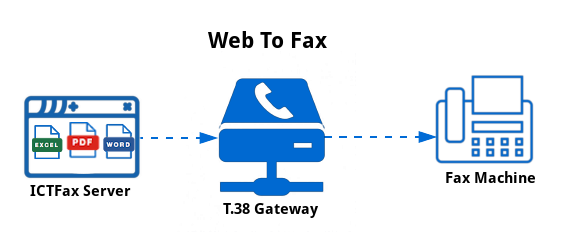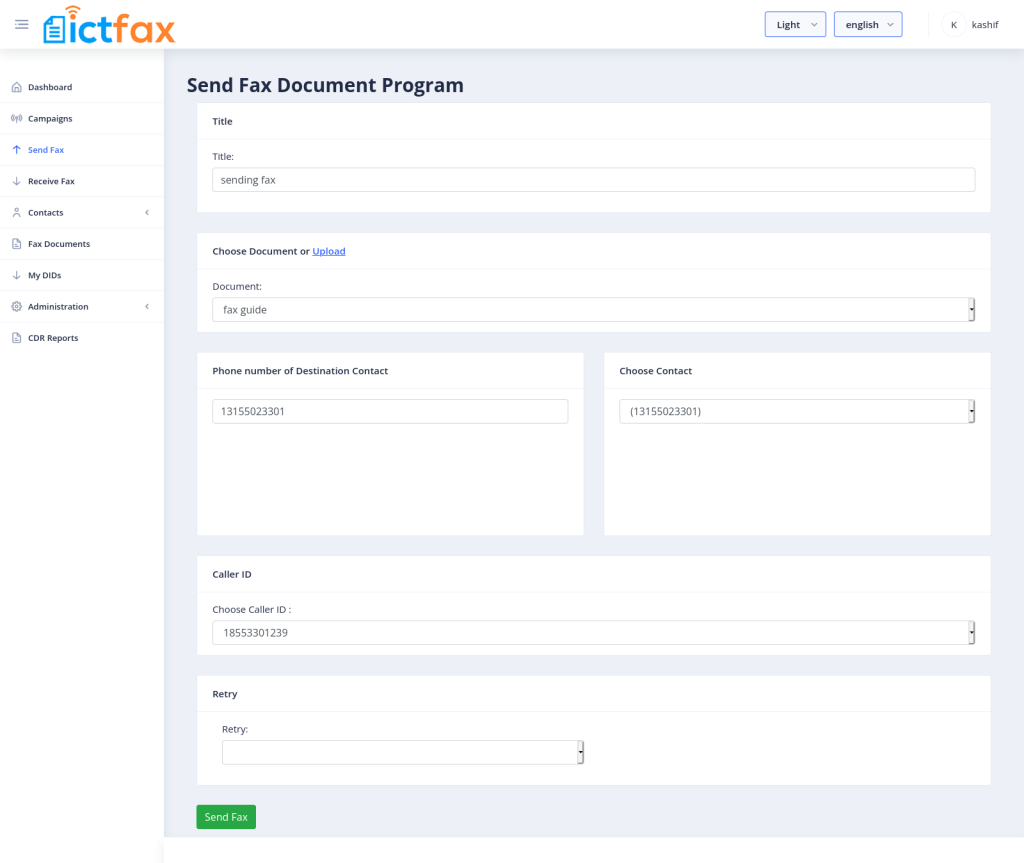Introduction:
The evolution of fax servers spans several decades, showcasing significant advancements. Initially, fax servers existed as standalone devices, requiring physical presence for fax transmission and reception. However, they have undergone a remarkable transformation. Today, fax servers have transitioned into cloud-based applications, offering the convenience of accessing them from anywhere with an internet connection. This technological shift empowers businesses to streamline their communication processes, ultimately boosting productivity.
If you are contemplating the adoption of a fax server, it is crucial to consider several factors. Firstly, determining the key features that align with your requirements is essential. Fax servers vary in the range of features they offer, with some providing extensive capabilities while others remain more basic. Secondly, your budget should be taken into account. The price range for fax servers can span from a few hundred dollars to several thousand dollars. Lastly, compatibility with your existing business systems is paramount. Ensuring seamless integration between the chosen fax server and your current infrastructure is crucial for optimal performance.
Evolution of Fax Server:
The Rise of Fax Machines and Their Limitations
In the 20th century, fax machines emerged as a groundbreaking means of communication, revolutionizing the transmission of documents via telephone lines. This technological innovation garnered widespread adoption among businesses and individuals due to its ability to provide a faster and more efficient alternative to traditional mail. Despite its advantages, fax machines were not without limitations. These included the requirement for physical equipment, paper consumption, and the inherent inconvenience of manual document handling.
Introduction to Fax Servers
As digital technology gained prominence, the emergence of fax servers brought forth a more streamlined and efficient approach to fax transmission. Acting as intermediaries between fax machines and digital networks, fax servers revolutionized the process by converting incoming faxes into digital files and directing them to recipients’ email inboxes or network folders. This revolutionary advancement eliminated the reliance on physical fax machines and paper documents, simplifying and modernizing the entire faxing process.

Transition to Digital Faxing
As businesses increasingly embraced digital communication, the concept of digital faxing gained traction. Fax servers evolved to support online faxing, allowing users to send and receive faxes directly from their computers or mobile devices. This transition to digital faxing eliminated the need for dedicated fax lines and physical fax machines, reducing costs and improving efficiency.
Integration with Existing Systems
Contemporary fax servers are designed to seamlessly blend into existing communication systems, including email servers and document management platforms. This seamless integration empowers users to send and receive faxes using familiar interfaces and workflows, eliminating the need for separate applications or manual processes. By integrating with other business systems, fax servers have become an indispensable component of the overall communication infrastructure.
The evolution of fax servers has revolutionized the way businesses handle fax communication. From traditional fax machines to the realm of digital faxing and the seamless integration with existing systems, fax servers have emerged as a crucial tool for businesses aiming to streamline workflows, boost productivity, and leverage the advantages of digital communication. In the subsequent sections, we will delve deeper into the specific benefits, features, and considerations involved in implementing fax servers.
Benefits of Fax Server:
Enhanced Document Security
One of the primary benefits of using fax servers is the enhanced document security they provide. Unlike traditional fax machines where documents may be left unattended or accessible to unauthorized individuals, fax servers offer robust security features. Encrypted transmissions, secure storage, and user authentication protocols ensure that sensitive information remains protected throughout the faxing process. This is particularly important for industries that deal with confidential data, such as healthcare, legal, and finance.
Improved Workflow Efficiency
Fax servers streamline document workflows, eliminating the need for manual handling and reducing administrative tasks. Incoming faxes are automatically converted into digital files, making it easier to organize, store, and retrieve documents. With features like automatic routing, fax servers can direct incoming faxes to the appropriate recipients or departments, saving time and ensuring efficient document distribution. Additionally, fax servers enable users to send multiple faxes simultaneously, further improving workflow efficiency.
Cost Reduction and Time Savings
By implementing fax servers, businesses can significantly reduce costs associated with traditional faxing methods. Eliminating the need for physical fax machines, paper, ink, and dedicated phone lines leads to cost savings in terms of equipment maintenance and supplies. Fax servers also reduce labor costs by automating document handling tasks and freeing up staff time for more critical responsibilities. The time saved through streamlined workflows and faster document transmission translates into increased productivity and efficiency.
Compliance with Legal Requirements
Certain industries, such as healthcare and legal, have strict regulations governing document transmission and confidentiality. Fax servers provide features that support compliance with these regulations, such as audit trails, electronic signatures, and secure transmission protocols. Fax servers also offer features like fax archiving and retrieval, making it easier to store and retrieve faxed documents for compliance and legal purposes.
Increased Accessibility and Mobility
Fax servers enable users to send and receive faxes from anywhere, as long as they have access to the internet. This increased accessibility and mobility are particularly beneficial for businesses with remote or distributed teams. Users can access faxes through email or web interfaces, allowing for seamless collaboration and timely response to faxed documents. Mobile apps provided by fax server vendors further enhance accessibility, enabling users to send and receive faxes on the go, regardless of their physical location.
Features of Fax Server:
Faxing:
This is the most basic feature of a fax server. It allows users to send and receive faxes. Fax servers can be used to send and receive faxes to and from other fax machines, as well as to and from email addresses.
Document management:
Fax servers can also be used to manage documents. This includes features such as storing, searching, and sharing documents. Fax servers can store documents in a variety of formats, including PDF, TIFF, and Word. Users can search for documents by keyword or by date. Fax servers can also be used to share documents with others, either by email or by uploading them to a file sharing service.
Security:
Fax servers can be used to protect sensitive documents. This includes features such as encryption and authentication. Encryption can be used to scramble the contents of a fax so that it cannot be read by unauthorized users. Authentication can be used to verify the identity of the sender or recipient of a fax.
Reporting:
Fax servers can be used to generate reports on fax activity. This can be helpful for tracking usage and troubleshooting problems. Reports can show the number of faxes that have been sent and received, the number of pages that have been faxed, and the time and date of faxes that have been sent and received.
Integration:
Fax servers can be integrated with other business systems, such as email and CRM systems. This can help businesses to streamline their communication and improve their productivity. For example, a fax server can be integrated with an email system so that faxes can be sent and received as email messages. A fax server can also be integrated with a CRM system so that faxes can be tracked and managed as part of the customer relationship management process.
Fax broadcasting:
This feature allows users to send the same fax to multiple recipients. This can be helpful for businesses that need to send out mass mailings or that need to keep in touch with a large number of customers or clients.
Fax queuing:
This feature allows users to send faxes at a later time. This can be helpful for businesses that need to send faxes during off-hours or that need to send faxes on a specific date or time.
Fax tracking:
This feature allows users to track the status of faxes that have been sent. This can be helpful for businesses that need to know when a fax has been received or that need to troubleshoot problems with fax delivery.
Fax logging:
This feature allows users to log all fax activity. This can be helpful for businesses that need to keep track of fax usage or that need to comply with regulations that require the logging of fax activity.
These are just some of the features that a fax server can offer. The specific features that are available will vary depending on the fax server that you choose.
If you are considering using a fax server, it is important to choose one that has the features that you need. You should also consider the price of the fax server and its compatibility with your existing business systems.

Conclusion:
Fax servers have emerged as a vital tool for businesses seeking to streamline their communication processes, boost productivity, and embrace the benefits of digital technology. Through their enhanced document security, improved workflow efficiency, cost reduction, compliance support, and increased accessibility, fax servers have proven to be a game-changer for modern enterprises.
The evolution of fax servers has bridged the gap between traditional faxing methods and the digital age. By leveraging features such as online faxing, fax broadcasting, fax archiving and retrieval, integration with email and document management systems, OCR capabilities, secure transmission, and scalability, businesses can optimize their fax communication workflows and achieve significant efficiency gains.
Leveraging Open Source in ICT
